The first time that I went seabeaning, I triumphantly scooped up what looked like a shrivelled brain from a national seashore that was strewn with plastic trash. I turned the fist-sized oddity over in my hands, admiring how the deep grooves on its bumpy brown surface created brain-like patterns.
That brain bean — also known as brainfruit, brain seed, monkey’s brain or Donovan’s brain — was neither brain nor bean but a well-traveled and wizened fruit. Whatever the name, it was key to understanding ocean currents and marine debris.
“We’ll only find these washed up at certain times of the year,” allowed beachcomber extraordinaire Jace Tunnell. “It’s only found in southern Mexico. These are on a tree. They fall off the tree, it rains, it gets washed into the river so that it goes all the way out in the Gulf of Mexico, and then the ocean currents bring it back up and wash it up on our shoreline.”
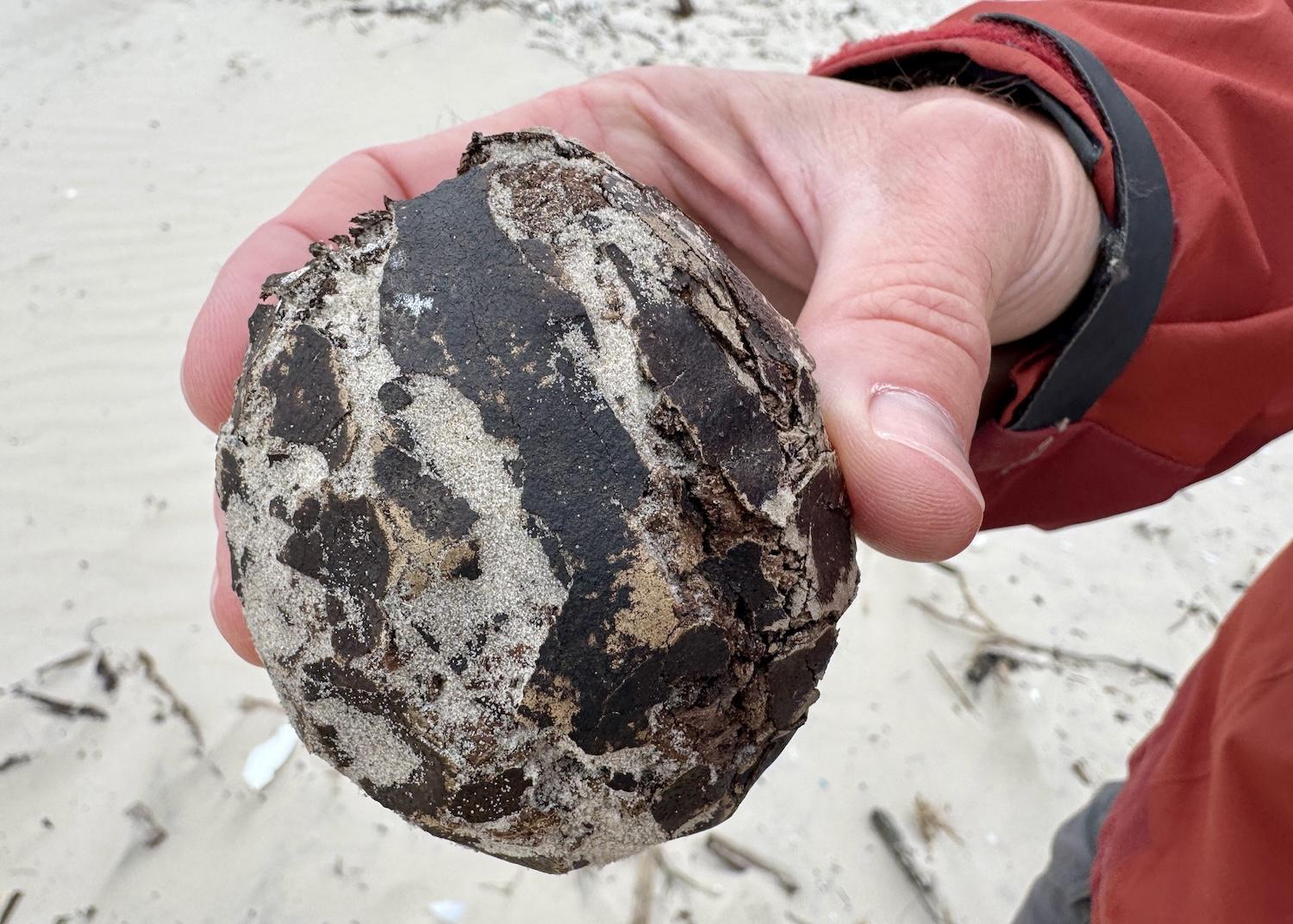
A brain bean (aka brainfruit) discovered on Malaquite Beach at Padre Island National Seashore/Jennifer Bain
We were at Padre Island National Seashore, part of the Corpus Christi area in south Texas, steps from the beach vehicle barrier at Milepost 0.
I tossed my gnarly treasure into a bag with sea coconuts, black mangrove seeds, tropical almonds, black walnuts, water hickory nuts and a prickly palm. Not a bad haul for a freakishly cold, windy and rainy day.
You’re probably wondering why I dared pocket anything from a National Park Service site where natural and cultural resources are usually protected. This national seashore — a 66-mile stretch of undeveloped beaches and natural habitat on North Padre Island — is unusual because you can drive on most of its beaches and collect a one-gallon container filled with sea beans and unoccupied seashells each day.
"Visitors are permitted to collect sea beans and seashells because they are plentiful, and their populations are considered to be self-rejuvenating," explained Chief of Interpretation and Education Kelly Taylor.

The NPS asks visitors to Padre Island National Seashore to help collect trash/Jennifer Bain
I had come to the seashore in February hoping to join the 30th annual Billy Sandifer Big Shell Beach Cleanup and do a deep dive into marine debris. Some 17,500 volunteers have cleaned 405 miles of beach and removed 1,625 tons of trash at what’s usually a “rain or shine” event on a remote stretch of four-wheel-drive beach. But this year’s cold snap and high tides forced the Friends of Padre to reschedule to March 29.
That’s when Tunnell stepped in for Plan B — a crash course in marine debris wrapped in a seabeaning adventure.
I was a fan of his Beachcombing series on YouTube about all the weird and wonderful things that wash up along Gulf of Mexico beaches. I knew from his #beachfindsfriday Facebook posts that he’s the director of community engagement at the Harte Research Institute at Texas A&M University-Corpus Christi and founder of the Nurdle Patrol, a citizen science project that tracks plastic pellet concentrations to create awareness of plastics in the ocean and develop data-driven policy.
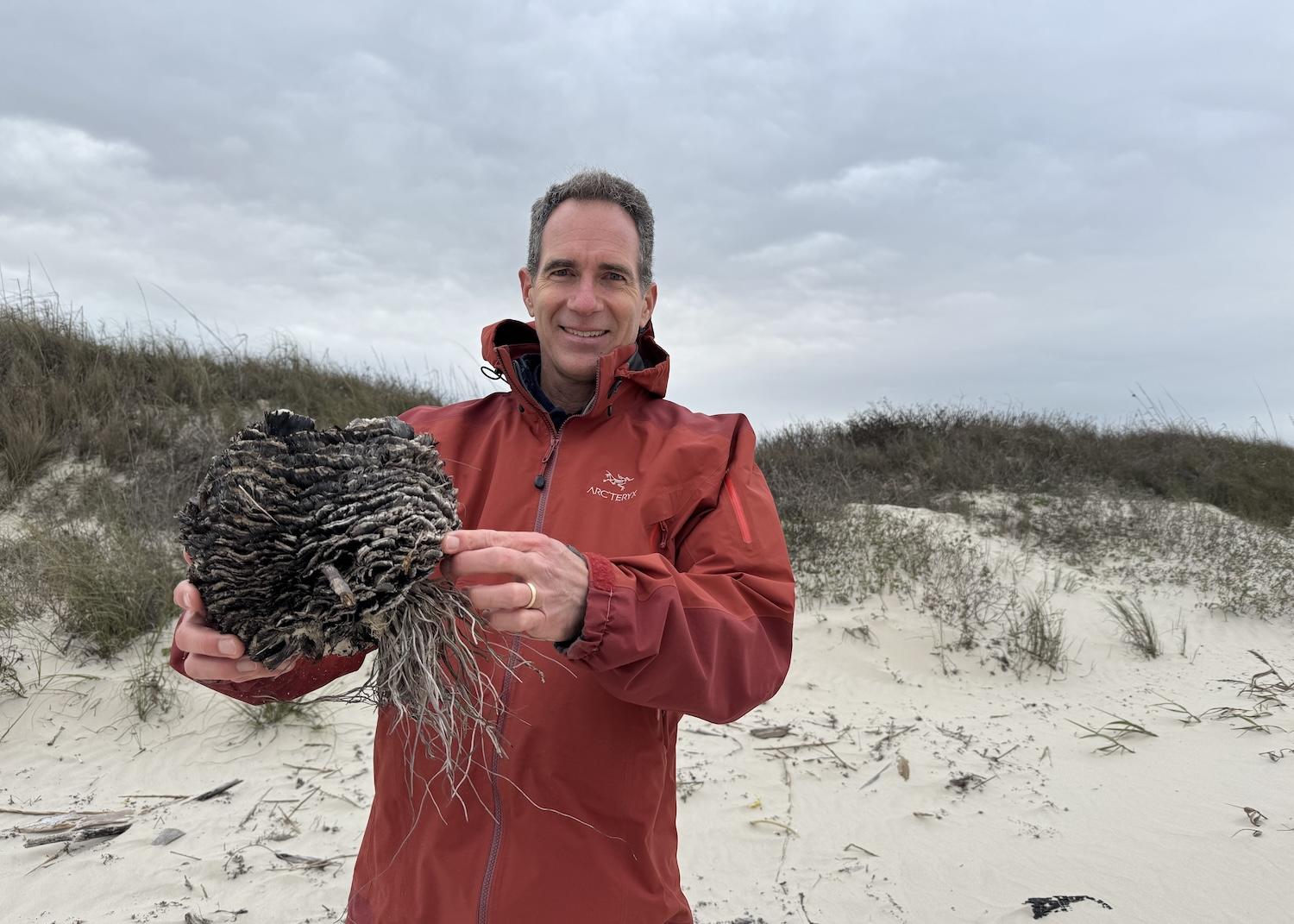
Harte Research Institute's Jace Tunnell, who has a beachcombing series on YouTube, finds something on Padre Island's Malaquite Beach that he can't instantly identify/Jennifer Bain
We met at the Malaquite Visitor Center by an outdoor sign that asked the burning question: “Why do you see so much trash on Padre Island’s beaches?”
Two Gulf of Mexico currents — one traveling north from Mexico and the other traveling south from Louisiana — come together about 30 miles off the coast of Padre Island. These currents carry masses of marine debris until they collide with opposing currents and push the trash onto the national seashore’s beach.
Park maintenance staff remove the big things like buoys, drums and boat pieces, while volunteers tackle small and medium-sized items like water bottles, medical waste, cigarette butts and toothbrushes. In 2023, the national seashore removed about 330 tons of trash from the beach. “The volume of waste that shows up on these beaches is staggering,” interpretive signage admits, asking people to pick up free trash bags and help with the “workload that never ends.”

You'll find free Up2U litter bags throughout Padre Island National Seashore in Texas/Jennifer Bain
Sure enough, there was a box of Up2U litter bags at the visitor center doorway emblazoned with “Litter is Pollution. Litter is Ugly. Litter Stinks. Litter Hurts.” The Coastal Bend Bays & Estuaries Program hopes the yellow mesh bags will change people’s behavior around Gulf of Mexico watersheds.
At Island Joes Coffee and Gallery on the way into the park, I had already seen how owner Bryan Tumlinson offers a free iced coffee to anyone who brings in a full bag of beach trash.
At the Texas State Aquarium Wildlife Rescue Center, I played a computerized ocean cleanup game to save sea turtles from eating plastic marine debris. The aquarium gift shop sold “Keep the Sea Plastic Free” t-shirts and Cora Balls, laundry balls that collect tiny, unseen microfibers from our clothes and turn them into fuzz that we can properly dispose of like lint.

The Texas State Aquarium shows some of the marine debris (in this case fishing lures and line) its Wildlife Rescue Center has removed from patients like sea turtles, marine mammals and birds in recent years/Jennifer Bain
Inside the national seashore’s compact visitor centre, I read how anything that is solid and made by humans can become marine debris once it's discarded, lost or abandoned in waterways and the ocean. I was challenged to consider what plastic items I use, how long I use them and how I dispose of them.
“One person can make a difference,” said an interpretive sign about the late Sandifer and the annual beach cleanup that continues in his honor.
Amid this sobering messaging about trash, I pumped the rangers about sea beans. They gave me a pamphlet showcasing 11 sea beans, brought out a binder full of sea bean information, showed me tide charts and sold me The Little Book of Sea-Beans and Other Beach Treasures by Cathie Katz and Paul Mikkelsen of Seabean.com fame.

Padre Island National Seashore Ranger Tommy DiGiovannangelo shows off the park's sea bean binder at the Malaquite Visitor Center/Jennifer Bain
At a touch table full of treasures and trash, Ranger Tommy DiGiovannangelo showed off his favorite sea bean — a sea heart — and warned me not to be confused by a soft yellow coral called sea whip. “A lot of people bring this in thinking it's electrical wire,” he said.
When Tunnell and I finally stepped out onto Malaquite Beach, we stopped to study tiny pieces of microplastic in the sand. Some were nurdles, plastic pellets that are melted down to create larger plastic items like plastic bottles and automobile parts. They’re far harder to clean up than big pieces of trash.

Harte Research Institute's Jace Tunnell, founder of the Nurdle Patrol, shows two pieces of microplastic. The nurdle (left) is a primary plastic intentionally manufactured at that size while the blue piece is a secondary plastic which has broken down from a larger item/Jennifer Bain
Switching gears, we started hunting for sea beans from around the world, but mostly from the Caribbean, Mexico, Central America and South America. You're allowed to collect one gallon of sea beans and/or unoccupied seashells a day for fun, but not for commercial reasons, like making artwork or jewelry that will be sold.
The NPS defines sea beans, sometimes called drift seeds, aa tropical nuts, seeds and fruits that have become adapted for long-distance dispersal by water. The buoyancy that allows them to travel on ocean currents helps them make their way high up the beach to the base of Padre Island’s dunes. This area, where the tide reaches its highest point, is called the wrack line and it’s where you’ll find organic materials such as kelp, seagrass, sargassum, driftwood, trash, toys and sea beans.
In other words, don’t look for sea beans at the low-tide line among colorful seashells. Walk up the beach and face above the high tide/wrack line where deceptively drab sea beans hide in plain sight.
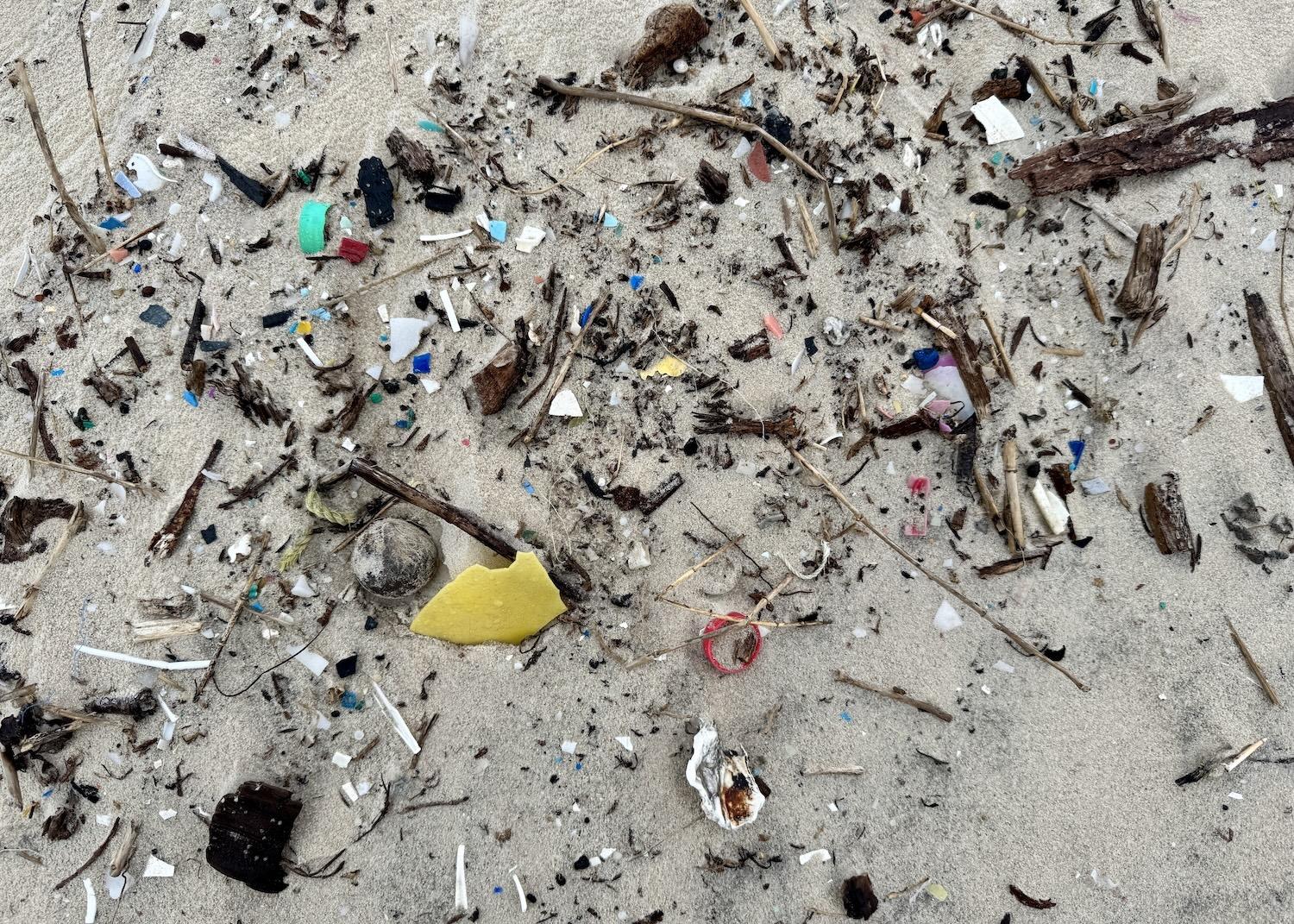
There's a sea coconut (aka golf ball) amid the marine debris in this Malaquite Beach shot/Jennifer Bain
The first thing I spotted was actually wizened dog poop. The second was a weathered tropical almond.
“It’s not as cool as a hamburger bean,” sniffed Tunnell, who was much more impressed by the sight of a sea coconut (aka golf ball). “It’s probably the biggest sea bean you’ll find around here,” he predicted. Little did he know what was waiting down the beach.
By the time I spotted that brain bean by Milepost 0, I had collected fresh black mangrove seedlings (probably from Texas), black walnuts (also American), pumice (volcanic rock probably from Mexico) and even prickly palms, which look like tiny bowling balls with three wee holes.
On the trash front, the most disturbing finds were a used syringe and spent shotgun shells.
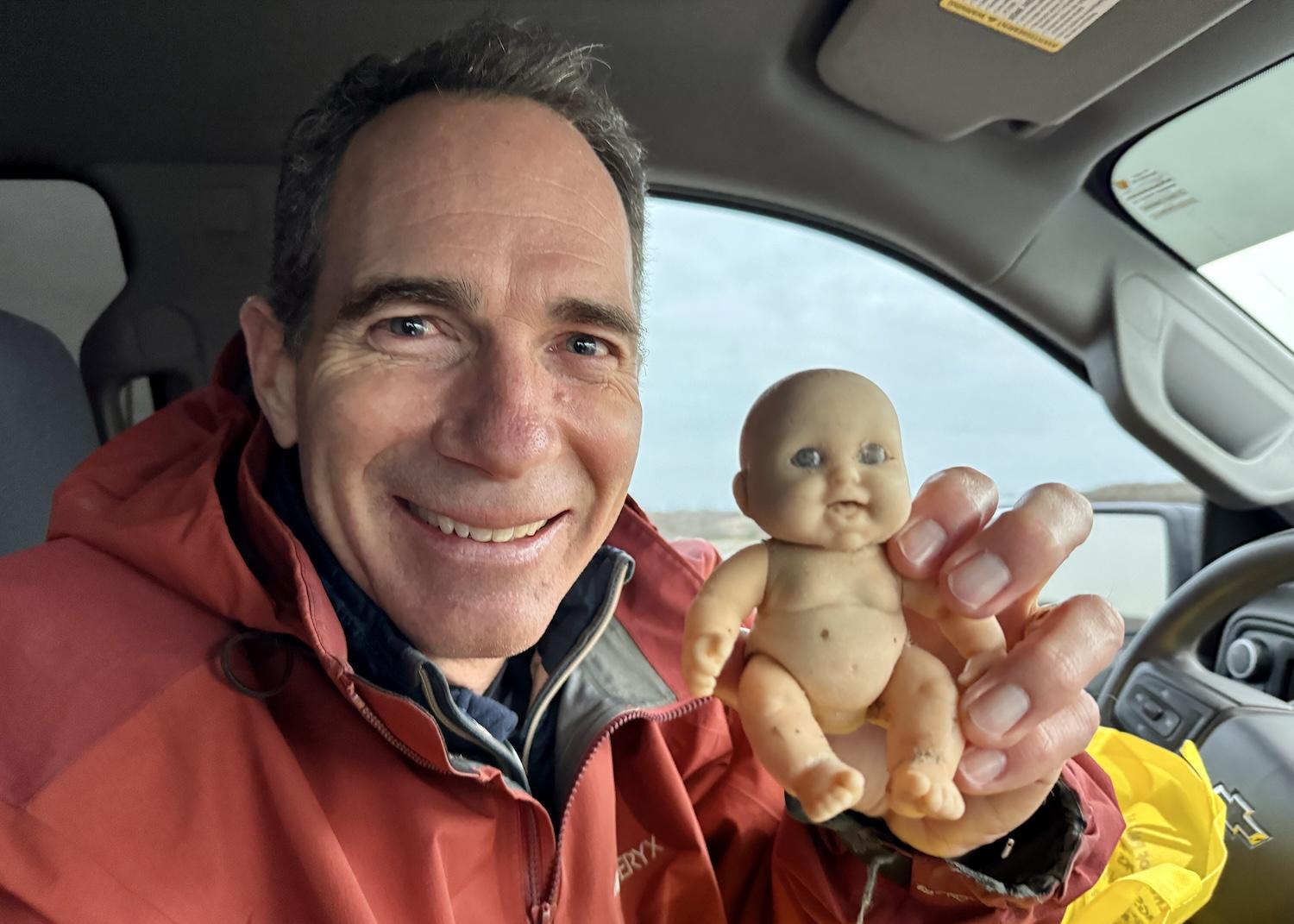
Jace Tunnell shows off one the "creepy dolls" he found on Padre Island's beaches/Jennifer Bain
The man who beachcombs for five to seven hours a week on his e-bike (preferably in the blazing sun) then took me to his truck to stay warm for a show-and-tell of his most fascinating finds. There was a message in a bottle, a witch bottle (an anti-witchcraft device), black drum fish teeth, vintage aluminum float from Spain and a “creepy doll.” Tunnell once appeared on Last Week Tonight With John Oliver to talk about viral creepy dolls washing up on Padre Island.
It turns out that Tunnell doesn’t particularly adore sea beans like I do “because there are so many other things that are on the beach.” But he does treasure one intricate foxtail palm sea bean that he found that looks hand-woven.
As a parting gift, he gave me one hamburger bean, two sea purses and brown and gray nickernuts.

Jace Tunnell offers a gift of five sea beans — grey and brown nickernuts, a hamburger bean (front right) and two sea purses/Jennifer Bain
That night in Corpus Christi, I read how beachcombers around the world have developed symbolic meanings for foreign seeds that wash ashore.
Hamburger beans ward off evil. Nickernuts have been worn as amulets by sea-goers. A sea heart inspired Christopher Columbus’ voyage to new land according to a legend in the Azores. Mary’s beans were considered good luck tokens, especially for laboring women in Scotland, because two grooves form a cross on their surface.
Sea beans have helped create snakebite antidotes, skin balms, shampoos, soaps, musical instruments and jewelry. They also lured me back to Padre Island for some solo seabeaning just before a downpour.

At Padre Island's Malaquite Visitor Center, Ranger Sarah Laughlin shows off a popular sea bean called a sea heart/Jennifer Bain
Back at the visitor center, Ranger Sarah Laughlin was surprised that I hadn’t found the two most popular sea beans — hamburger beans or sea hearts, which are “big and easy to see when they wash in.” She patiently identified all my sea beans from the previous day, surprised me with a sea heart, and then suggested I beachcomb at the less-traveled spot away from the campground where driveable North Beach becomes vehicle-free Closed Beach.
That quiet stretch of beach yielded more almonds and sea coconuts, freshly dumped dog kibble and sandpipers galore in between disposable gloves, plastic bottles and distressing amounts of microplastic. Once you see microplastic in the sand, you can't unsee the magnitude of the problem.
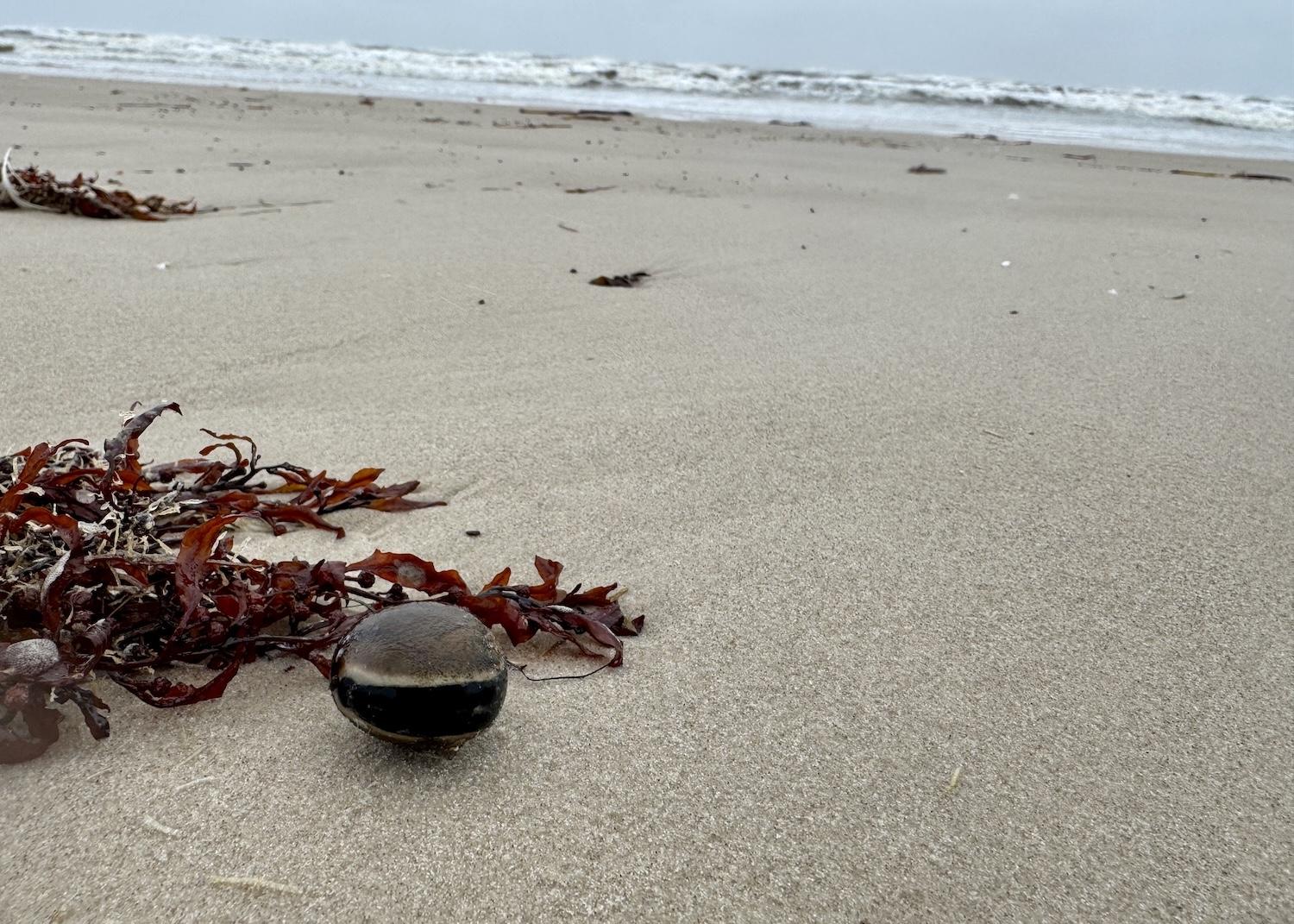
A hamburger bean awaits beachcombers at Padre Island National Seashore in Corpus Christi, Texas/Jennifer Bain
I never had the thrill of finding my own sea heart but discovering a hamburger bean just steps from my car was the perfect way to end my very wet trip to Corpus Christi. Born on a woody vine in a tropical rainforest somewhere, it had fallen from its parent plant into a waterway and floated along the sea-bean highway to Texas. I took that hamburger bean home along with my precious brain bean — after dropping a yellow bag of beach trash into a park dumpster, of course.
Like Tunnell, I realized that to make people care about our oceans you must dazzle them with the beautiful (like sea beans) and the ugly (man-made trash) and assure them that simply picking up a few pieces of garbage does make a difference. “Even if you live in the middle of the country, everything leads to the ocean and there’s real impacts,” he likes to say. “We know there’s a problem. We know there’s solutions. Let’s not kick the can down the road to the next generation. Let’s do something about it.”



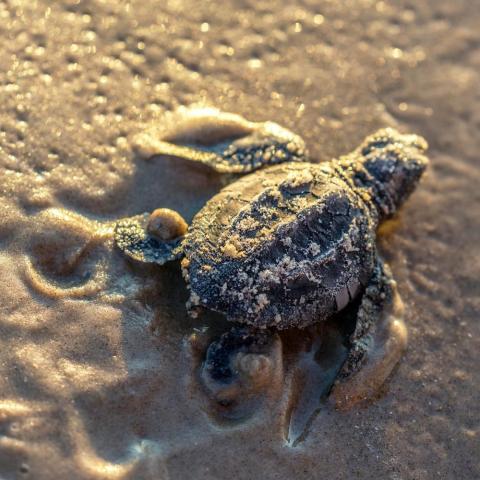
 Support Essential Coverage of Essential Places
Support Essential Coverage of Essential Places






